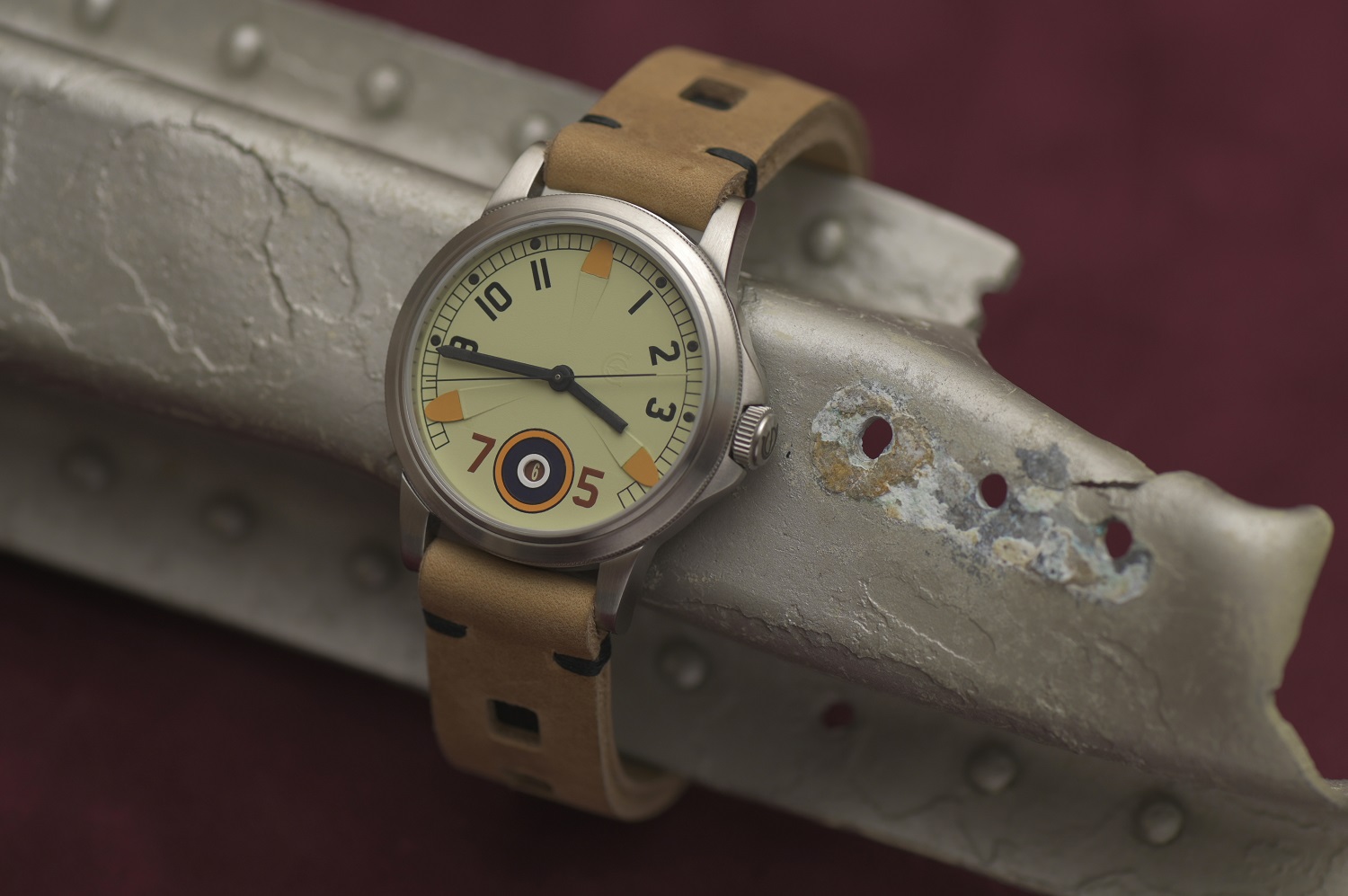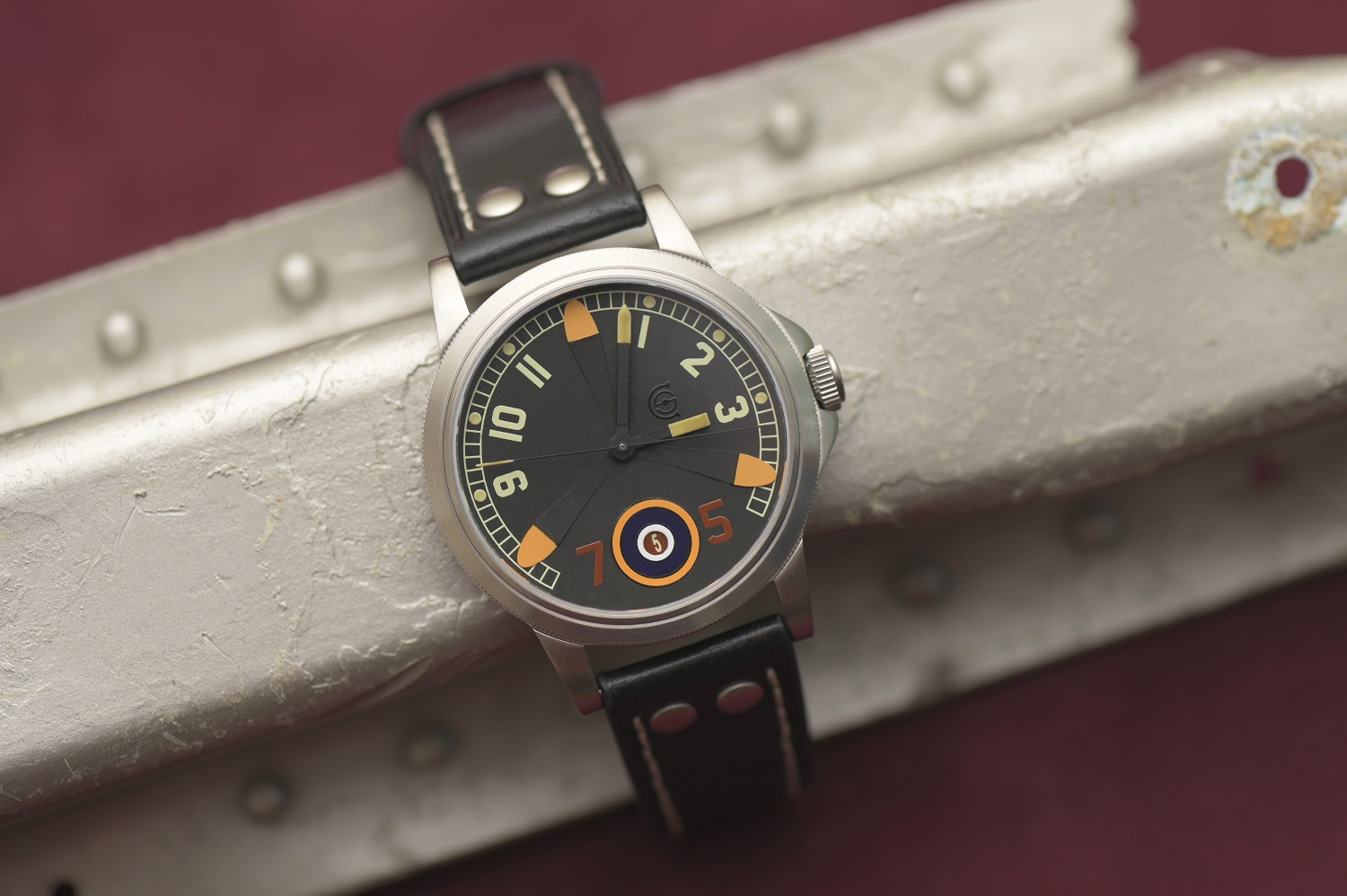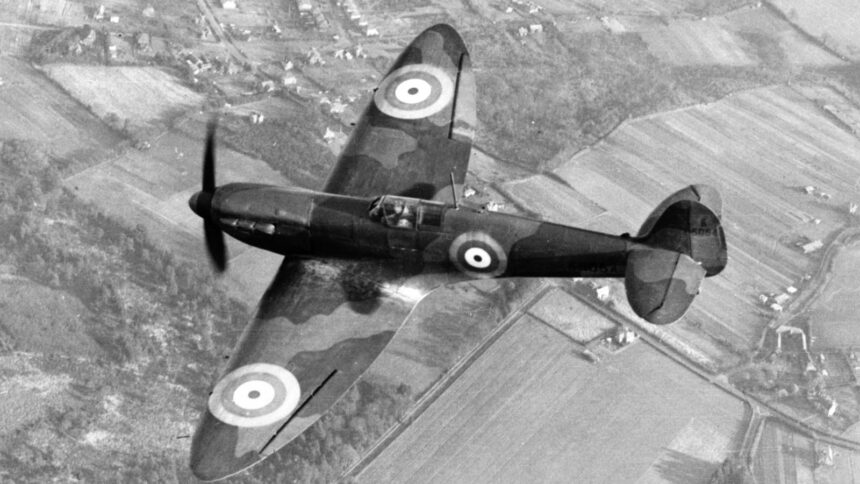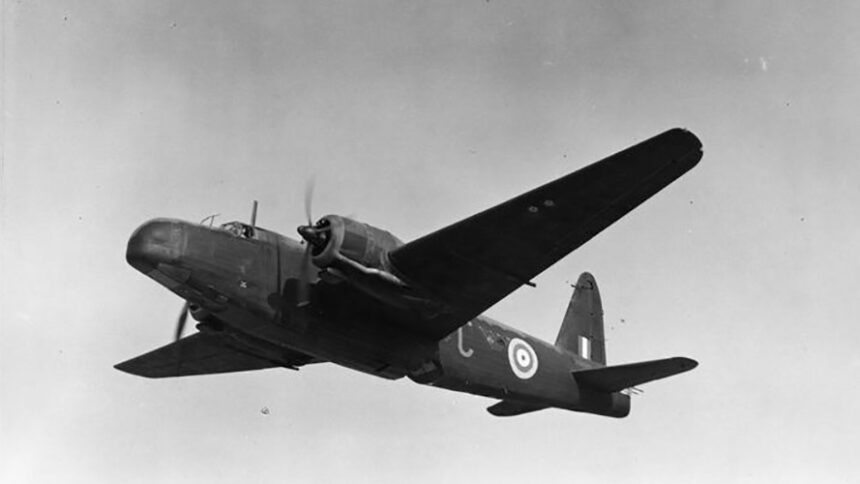We remember them
Stories
There are three stories associated with this watch, they are no more or less important than so many other stories from land, sea, air, at home and abroad, for the military, and the civilians fighting, surviving and perishing in the Second World War.
It was important to us in creating this watch because the generations we knew as children and young adults had lived through it and shared, or chose not to share, or just couldn’t share, what they had been through. They are very few now and over 75 years on from VE and VJ day, it seemed appropriate.

The Watch
Each of the tips on the dial is taken from a different aircraft, a Wellington Bomber, Hawker Hurricanes and of course a Spitfire from the battle of Britain. We picked three iconic aircraft to use, each with very different stories, that all ended in a similar way, where human loss was associated directly or subsequently. All the relics were sourced from extremely reputable licenced suppliers and we have used as little material as possible. Once this issue is complete, we will return the remaining metal parts to each of the sites.
The aim here is not to be sentimental, it is to have that tangible connection to commemorate, honour and remember those past endeavours and sacrifices.

The Back
On the back is a later story being told, my memory of my Grandfather rushing outside when a vintage Lancaster flew overhead and the immortal cry of “Don’t worry Doll [my Grandmother], it’s one of ours!” 40 years after the war was over, some habits were hard to break.
The Lancaster silhouette on the back was taken from the recognition booklet issued to the watch dial maker’s father, when he was an recruited as an observer and shows the underside of a Lancaster.
You can find the detailed stories of the specific aircraft below. We hope all these stories resonate and mean as much to you as they do to us. The sale of these watches will benefit all 3 Service charities.

For more details on the VE 75 Watches please visit the shop page or ask us for more information or a viewing
The Aircraft
Hawker Hurricanes PZ851, PZ765 and PZ854
The Hawker Hurricane single seat fighter aircraft was the first monoplane fighter to enter service with the RAF. Hawker Hurricane PZ851 (piloted by Flight Sergeant Ernest Mary Leon Marien (Belgian)), PZ765 (piloted by Flight Sergeant Marcel Henry Leon Orban (Belgian)) and PZ854 (piloted by Flight Sergeant John Victor Robinson) of Number 11 (P)AFU crashed on Tintwhistle Knare near Glossop on 22nd February 1945. The aircraft were undertaking training from RAF Calveley and flew into smog east of Manchester. All three pilots were killed.
Source: peakdistrictaircrashes.co.uk
Spitfire R6642
The Vickers Supermarine Spitfire was a single seat fighter aircraft, entering service in August 1938.
John Wilfred Lund from Norton, Yorkshire read history at Oriel College, Oxford and a member of the University Air Squadron. He was posted to 92 Squadron at Biggin Hill on 2 October 1940. As P/O he was shot down by a Messerschmitt 109 on 15 October 1940 in Spitfire R6642 off Bee Ness Jetty, Kent Reach. He was rescued from the sea by HMS Nysan. He died on 2 October 1941 aged 22 as Flight Lieutenant returning from France after carrying out a low-level “rhubarb” operation.
Sources: Battle of Britain Monument Archive www.bbm.org.uk, www.the-battle-of-britain.co.uk, www.backtonormandy.org
Wellington HE422
The Vickers Wellington Mk X was the last bomber version to be built, and the last Wellington Bomber Command mission was flown in October 1943. On April 10th 1943 Wellington HE422 was one of 13 Wellington Bombers from 420 “Snowy Owl” Squadron RCAF, heading on a bombing mission to Frankfurt. On its return after a successful mission, HE 422 became low on fuel and the crew bailed out in near Tenby, Wales. On April 11th after carrying on for 140 miles HE 422 crashed in Burmington, Warwickshire.
Sources: www.aircrewremembered.com, www.historyof war.org


